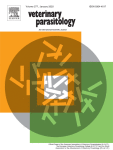Ver ítem
- xmlui.general.dspace_homeCentros e Institutos de InvestigaciónCICVyA. Centro de Investigación en Ciencias Veterinarias y AgronómicasInstituto de BiotecnologíaArtículos científicosxmlui.ArtifactBrowser.ItemViewer.trail
- Inicio
- Centros e Institutos de Investigación
- CICVyA. Centro de Investigación en Ciencias Veterinarias y Agronómicas
- Instituto de Biotecnología
- Artículos científicos
- Ver ítem
Development of highly sensitive one step-PCR tests for improved detection of B. bigemina and B. bovis
Resumen
Bovine babesiosis caused by Babesia bigemina and B. bovis is an economically relevant tick-borne disease distributed over tropical and subtropical world regions. Animals that recover from the clinical disease can remain persistently infected, and those carriers are epidemiologically relevant since they can act as a source of infection to other animals through the tick bite. According to the manual of the World Organisation for Animal Health (OIE), the
[ver mas...]
Bovine babesiosis caused by Babesia bigemina and B. bovis is an economically relevant tick-borne disease distributed over tropical and subtropical world regions. Animals that recover from the clinical disease can remain persistently infected, and those carriers are epidemiologically relevant since they can act as a source of infection to other animals through the tick bite. According to the manual of the World Organisation for Animal Health (OIE), the recommended molecular diagnosis test for both parasites is a nested polymerase chain reaction (nPCR) based on an amplification of a fragment of the rap-1 gene. Since nPCRs are time consuming, have a higher cost and risk of contamination, we propose a single step PCR for B. bigemina (BbiVESA) and B. bovis (BboVESA) based on the amplification of the multi-copy ves-1α gene. We developed these methods and we achieved a detection limit of 1 × 10−12 % parasitemia for B. bigemina and of 1 × 10−6 % for B. bovis using reference strains, which compared to the reference OIE tests, results in an improvement in sensitivity of six orders for B. bigemina. Finally, we tested 48 field samples from a babesiosis enzootic region where we were able to detect a higher proportion of positive animals with both VESA methods than with the reference rap-1 nPCRs. This difference was statistically significant for each Babesia species. Concordance between both diagnostic schemes based on Cohen's kappa coefficient showed minimal to non-agreement (κ = 0.32) for B. bigemina and non-agreement (κ = 0.16) for B. bovis since BbiVESA and BboVESA PCR tests showed a significantly higher detection capacity. In conclusion, the high sensitivity of the assay, together with the lower demand of time and reagents make the VESA PCR methods developed here a valuable diagnostic tool for the molecular detection and epidemiological survey of both Babesia pathogens.
[Cerrar]

Fuente
Veterinary Parasitology 296 : 109493 (August 2021)
Fecha
2021-08
Editorial
Elsevier
ISSN
0304-4017
Formato
pdf
Tipo de documento
artículo
Palabras Claves
Derechos de acceso
Embargado
 Excepto donde se diga explicitamente, este item se publica bajo la siguiente descripción: Creative Commons Attribution-NonCommercial-ShareAlike 2.5 Unported (CC BY-NC-SA 2.5)
Excepto donde se diga explicitamente, este item se publica bajo la siguiente descripción: Creative Commons Attribution-NonCommercial-ShareAlike 2.5 Unported (CC BY-NC-SA 2.5)

